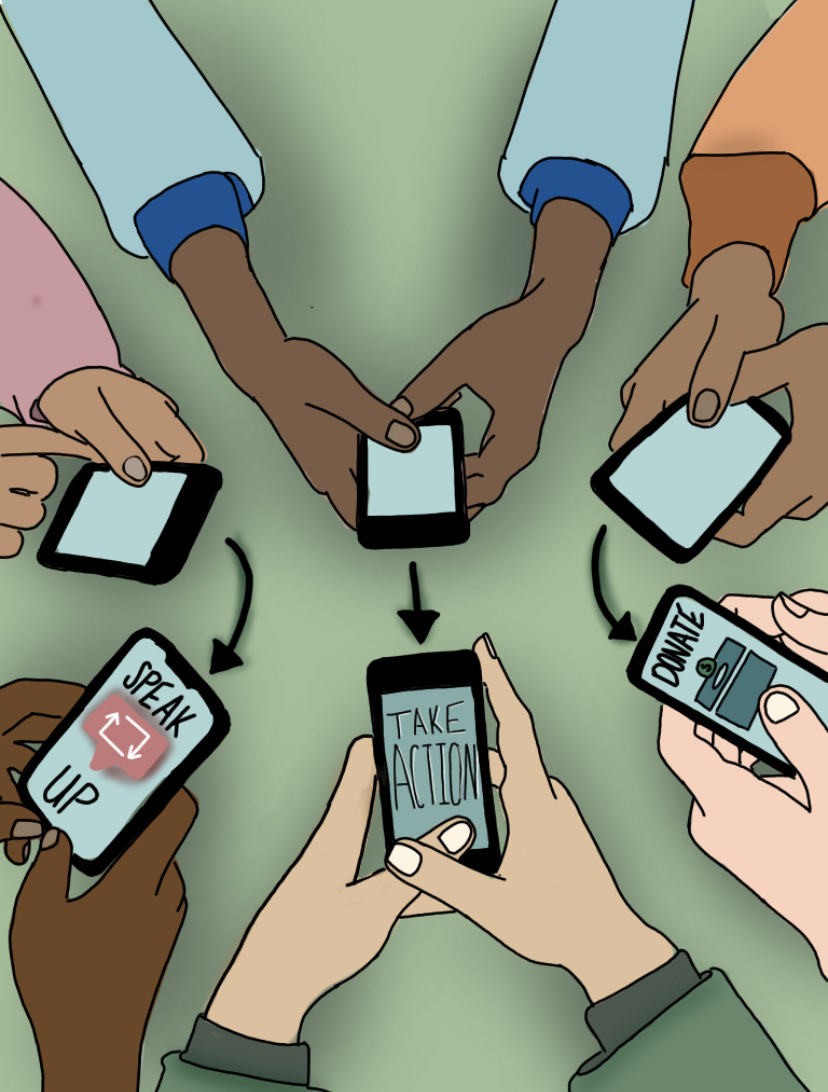
After a long night of scrolling, the first thing we both do in the morning is reach for our phones that are strategically placed within arms reach. It’s our instinctive reflex. We may opt to dive directly into the world of social media or begin our day by fixating on the latest updates regarding our academic performance. 89% of people of all ages check their phone within 10 minutes of waking up, according to a survey from Reviews.org, signifying the intense influence technology holds in our lives. However, we are now entering a new age: the increased implementation of technology in schools.
Students may not immediately notice it, but technology is dominating school. Even the smallest items, such as the Smart Board, have replaced traditional classroom items. Gone are the days of black and green chalkboards and now we must adjust to an unnecessary use of digital resources. Chalk residue has since been replaced with digital markers that leave intangible marks in our minds: reminders of our constant use of electronics. With technology replacing such minuscule classroom objects, we are now required to turn to digital devices at unnecessary times.
With constant reminders of our heavy reliance on technology, even tasks as simple as receiving classwork sends students to their laptops to open the 1.3-star rated website, Schoology, used to access their course material. While Schoology’s ability to publish grades and send them out digitally can be beneficial in terms of accessibility, it also prompts the question of whether technology is actually an asset to students. With constant software updates that fail to address the issue of crashing throughout the school day, Schoology forces us to receive our classwork and constantly check our grades digitally, further growing our online dependency.
After completing the quarter, we are obligated to use more technology to share our grades. Instead of bringing our report cards home in an orange package, a digital report card replaces tangible paper that once carried a sentimental value. With this unnecessary change, traditions of mailing report cards to family members have now been diminished and replaced with a screenshot of MiStar sent via text message. Through electronic documents, we are now subject to forgetting about former achievements or projects that are now lost in the neverending webs of the digital world.
With the introduction of the digital Scholastic Assessment Test this spring, the College Board has now taken a large leap from the historic paper exam to the revolutionary online format. Even the exam format encourages bad habits, with a total of two hours and 14 minutes spent testing, we are now expected to spend 14 minutes more than the recommended screen time on just the exam, according to Reidhealth.org. This does not even take into account the additional screen time we spend on our phones outside of school, something we students may be ashamed to confess. While this statistic can seem unrealistic and impractical for the average person including us, it is frightening to know that we are only continuing to be consumed by the mass use of electronic devices in an academic setting.
As the years progress, schools will only further their online usage. With beneficial changes like grading efficiency, test taking and accessibility through the use of technology, we are only more likely to gravitate towards its application in schools. However, we must acknowledge its parameters, those being using technology only when necessary. Since we are already overusing technology in school, we can make sure to limit our usage at home to aid our mental health and make the implementation of devices more limited throughout the day. By limiting the use of technology outside of school and proposing solutions and alternatives to online usage in school, we can prevent our overconsumption of digital platforms in today’s age.




















